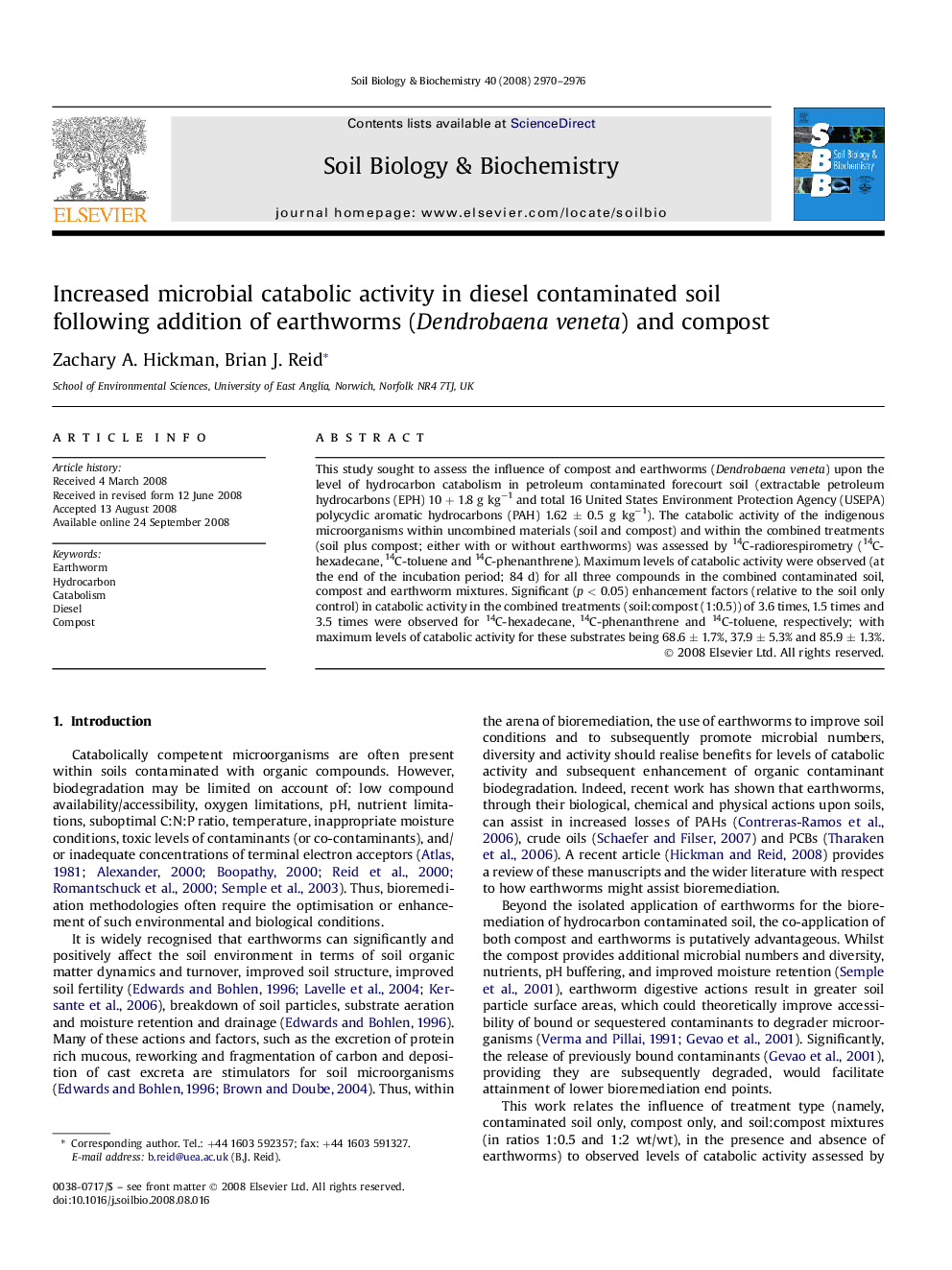| Article ID | Journal | Published Year | Pages | File Type |
|---|---|---|---|---|
| 2026296 | Soil Biology and Biochemistry | 2008 | 7 Pages |
This study sought to assess the influence of compost and earthworms (Dendrobaena veneta) upon the level of hydrocarbon catabolism in petroleum contaminated forecourt soil (extractable petroleum hydrocarbons (EPH) 10 + 1.8 g kg−1 and total 16 United States Environment Protection Agency (USEPA) polycyclic aromatic hydrocarbons (PAH) 1.62 ± 0.5 g kg−1). The catabolic activity of the indigenous microorganisms within uncombined materials (soil and compost) and within the combined treatments (soil plus compost; either with or without earthworms) was assessed by 14C-radiorespirometry (14C-hexadecane, 14C-toluene and 14C-phenanthrene). Maximum levels of catabolic activity were observed (at the end of the incubation period; 84 d) for all three compounds in the combined contaminated soil, compost and earthworm mixtures. Significant (p < 0.05) enhancement factors (relative to the soil only control) in catabolic activity in the combined treatments (soil:compost (1:0.5)) of 3.6 times, 1.5 times and 3.5 times were observed for 14C-hexadecane, 14C-phenanthrene and 14C-toluene, respectively; with maximum levels of catabolic activity for these substrates being 68.6 ± 1.7%, 37.9 ± 5.3% and 85.9 ± 1.3%.
